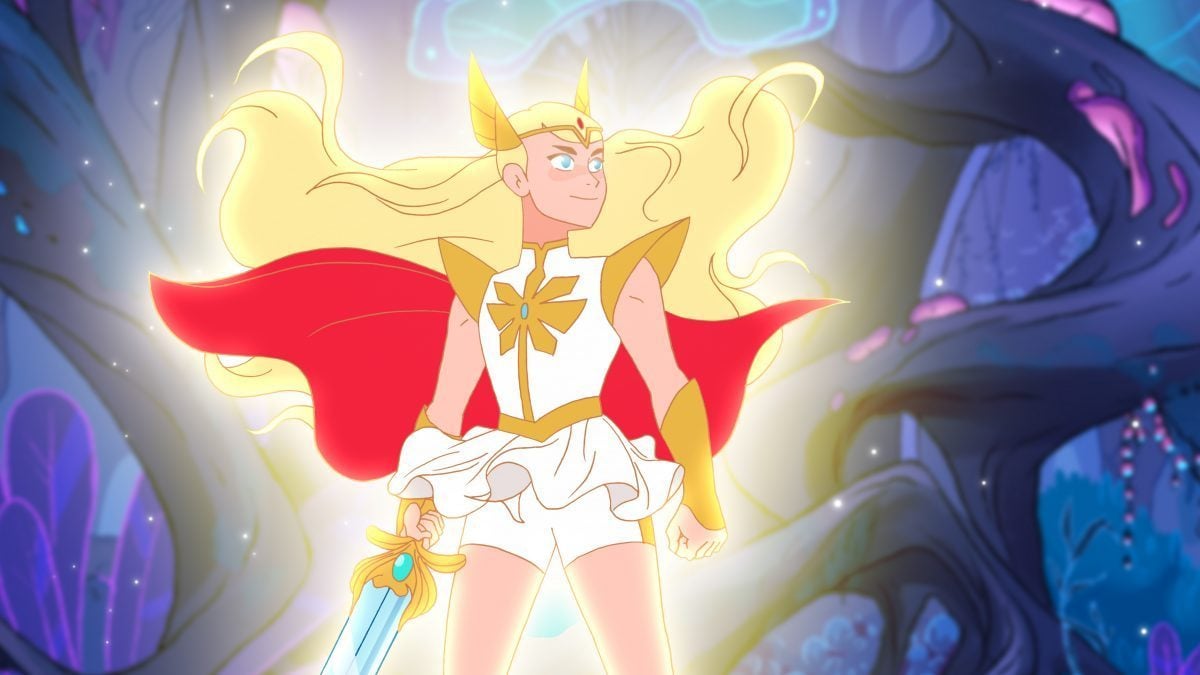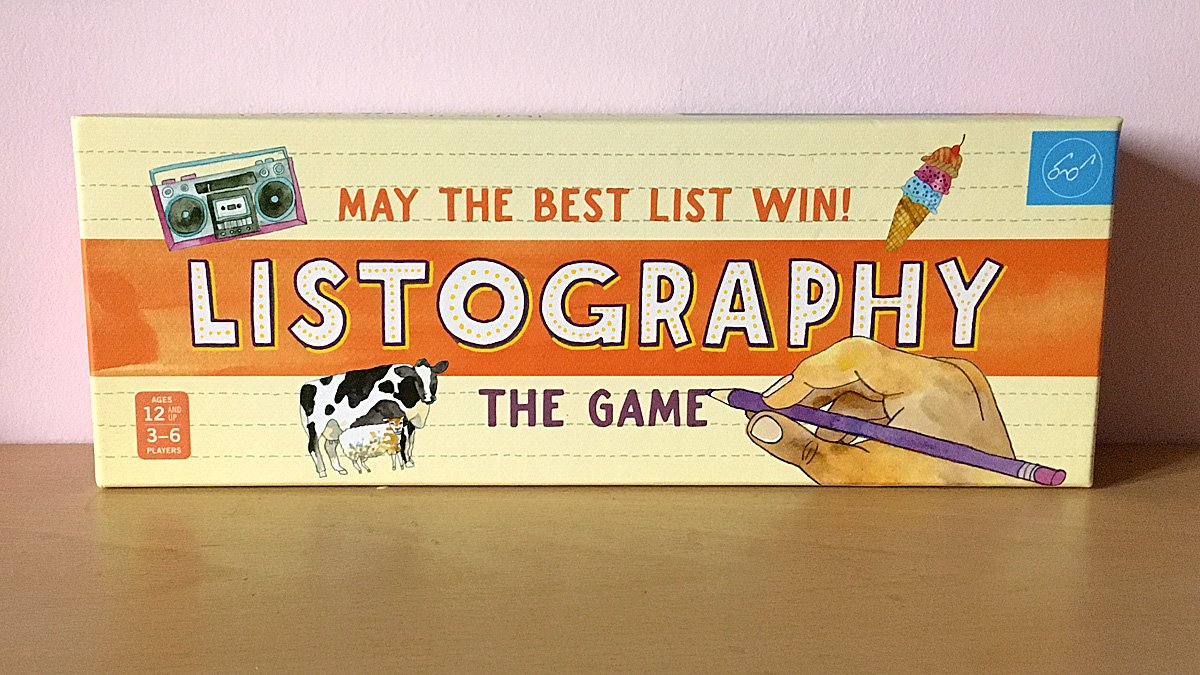
During October and November, I have been reviewing a selection of new games ideal for families during the holiday season. Today’s pick is Listography.
All the games in this series are easy-to-learn, family-friendly, reasonably-priced, and a whole lot of fun, making them perfect for family get-togethers and playable by everyone from kids to your great-grandma. Check out the Games for the Holidays tag for more.
Please note: This post contains affiliate links.
What is Listography?
Listography is a list-making board game based on the popular Listography journal notebooks. It is recommended for three to six players ages 12 and up.
Components
- 300 List Topic Cards
- 6 Player Tokens
- 6 List Pads
- Game Board
- 45 Second Sand Timer
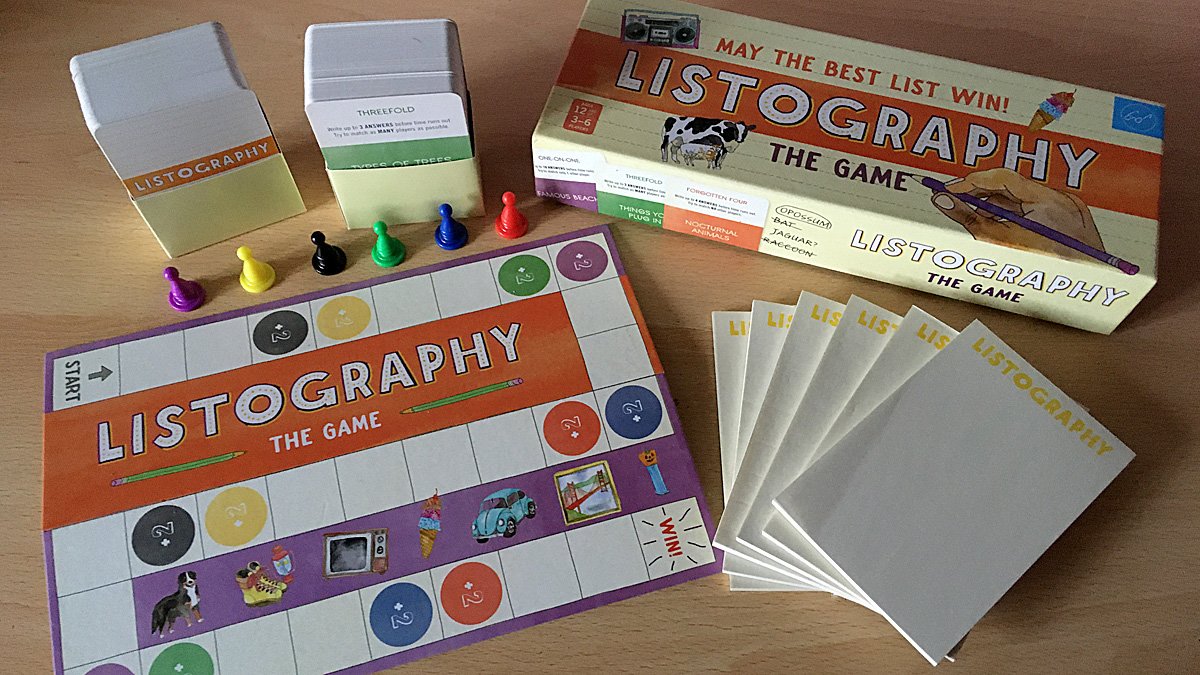
The Listography box is small and neat, fitting everything inside with almost no wasted space but without anything feeling squashed or risking damage. I really liked that the instructions were printed on the underside of the lid to reduce the amount of paper required. This is something I remember being commonplace with many board games I played as a child but which seems to have fallen out of fashion recently. I’d love to see it make a comeback because it is an incredibly easy way to reduce waste.
The Player Tokens are rather cheap looking and made of plastic but the cards are printed on a lovely, matt cardstock which does somewhat make up for that and because the pieces are so generic, they could easily be replaced with something higher quality if you so wished. However, the color of the pieces does matter so any replacements must be of the same colors.
How Do You Play Listography?
Setup
The game board is placed in the center of the play area with one token on the start space for each player. Each player takes one of the List Pads and makes sure they have something to write with. The List Topic card decks are placed in reach of all players and the game is ready to begin.
Gameplay
A game of Listography takes place in rounds during which every player participates. In each round, one player draws a card from one of the decks and announces both the topic and the card type. That player then turns over the sand timer and all players quickly write down items that match the List Topic on their List Pad, keeping their answers secret from the other players.
The number of answers players should write is dictated by the type of card that has been pulled from the deck. There are three card types in Listography:
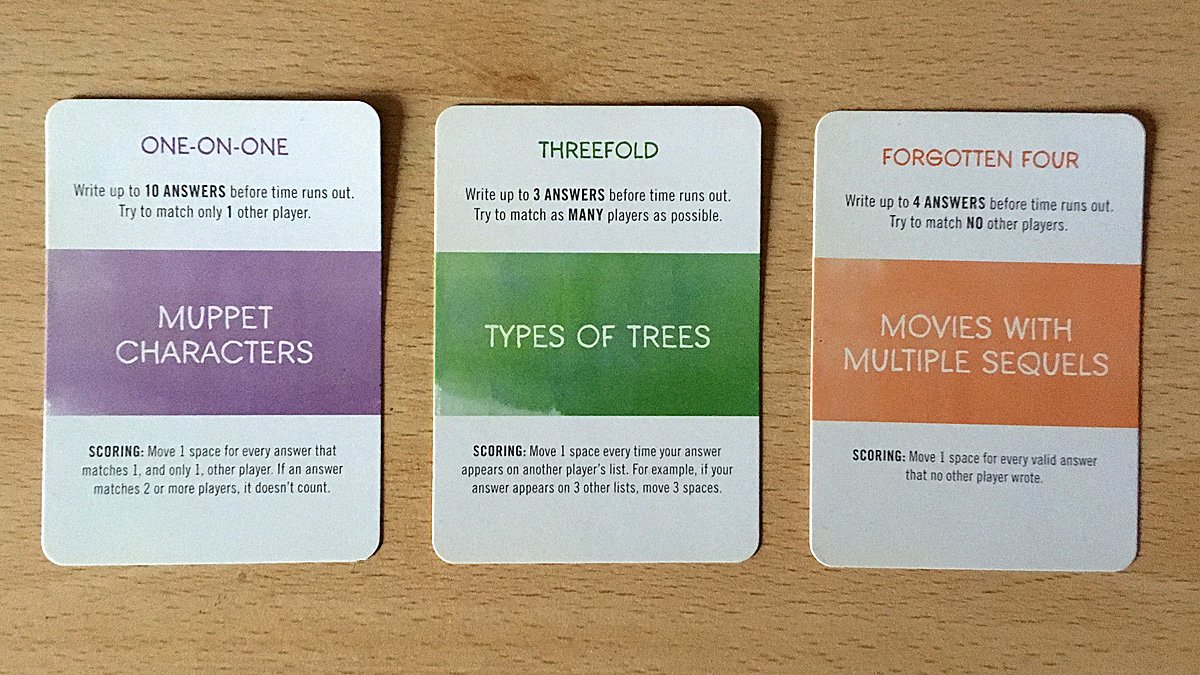
One-on-One: Players may write up to ten answers on their List Pad. Answers must match with just one other player to score.
Threefold: Players may write up to three answers on their List Pad. Answers should match as many other players as possible.
Forgotten Four: Players may write up to four answers on their List Pad. Answers should match no other players.
Scoring
Once the sand timer has run out, players compare their lists to work out their scores. For each point they score, they move one space on the board. To help explain this, take a look at the pictures below.
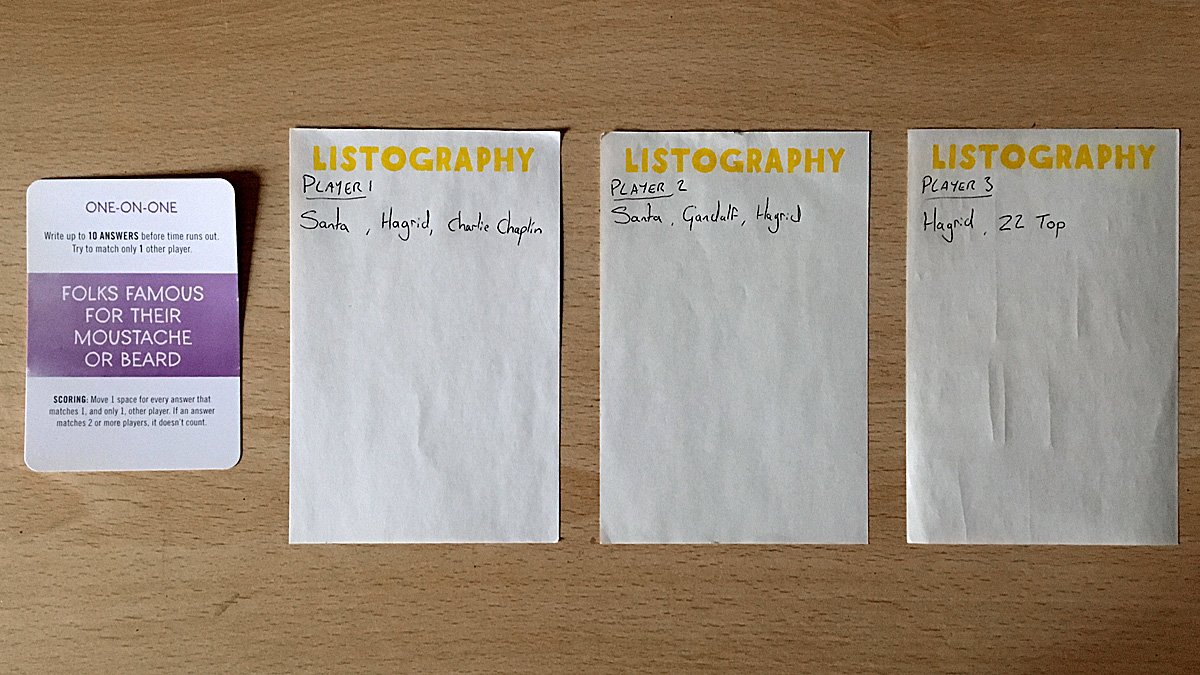
One-on-One Card: Player One has matched their answer ‘Santa’ with Player Two but not Player Three, so Players One and Two each score a point for it. All three players wrote down ‘Hagrid’ so nobody scores for it. The other answers are all unique to the player who wrote them and so do not score.
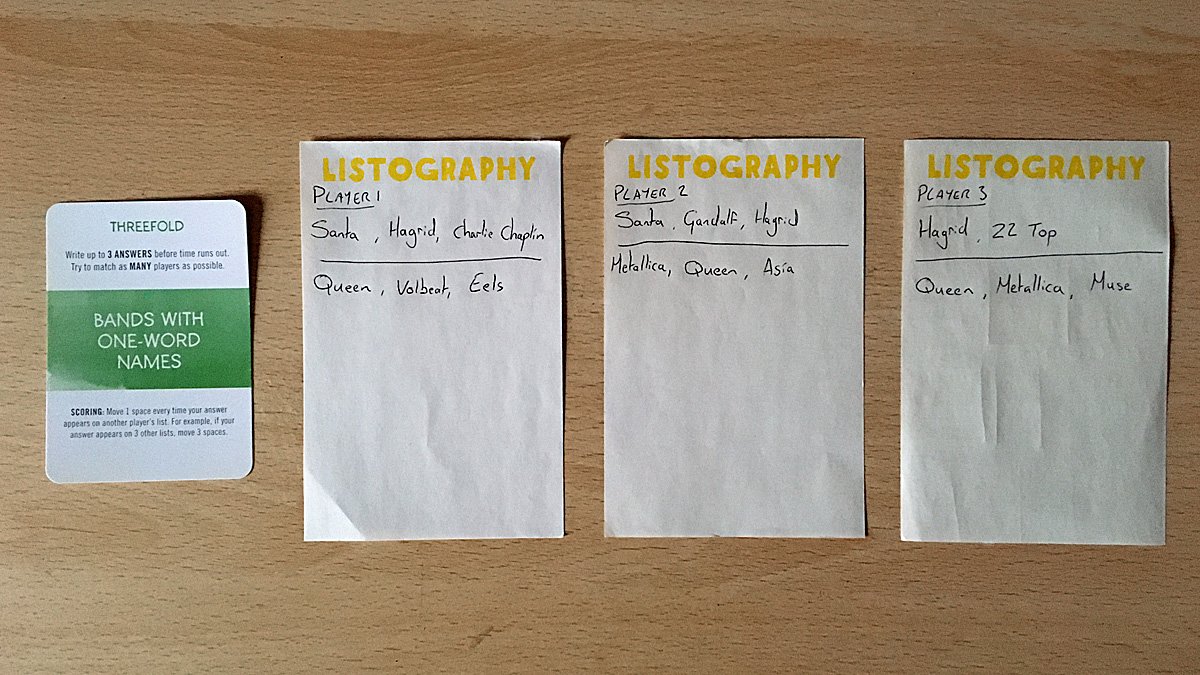
Threefold: Player One’s answer ‘Queen’ matches an answer on both Player Two and Player Three’s list, so each player scores two points for it, one point for each list it appeared on beside their own. Players Two and Three both wrote ‘Metallica’ so they score a single point for that one.
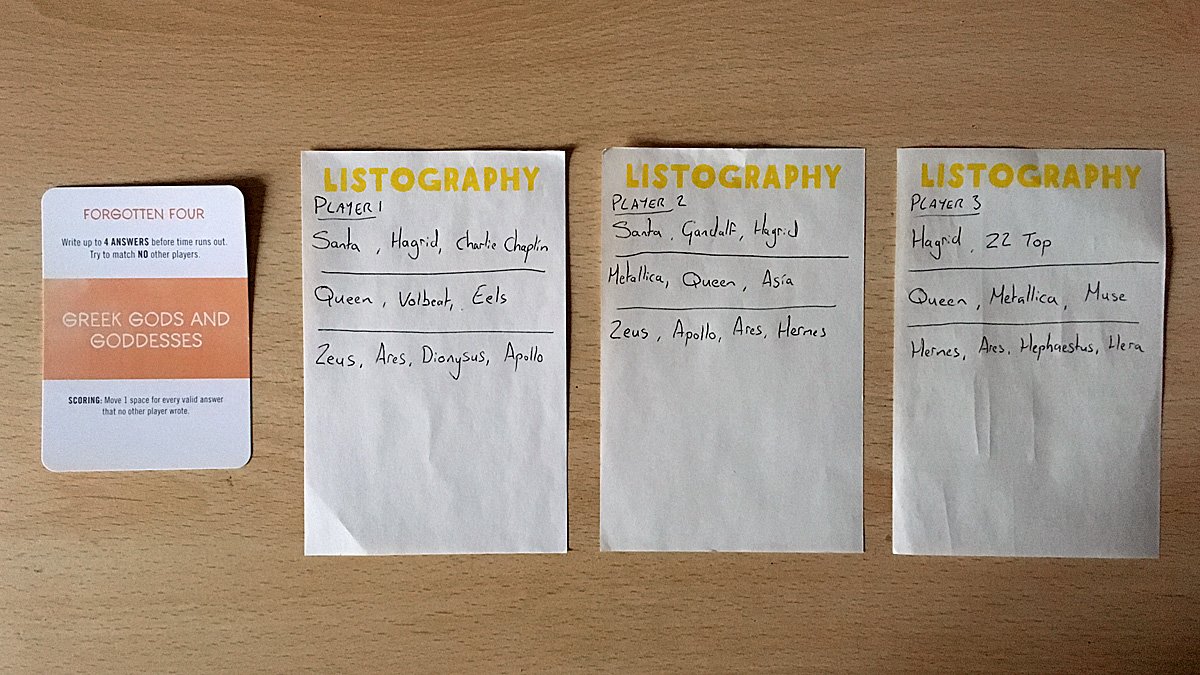
Forgotten Four: Player One’s answer ‘Dionysus’ appears on no other player’s list so they score one point for it. All of Player Two’s answers are duplicated on other lists so they score nothing this round. Player Three has two answers that appear nowhere else, so they score two points.
When a player moves their Player Token on the board after scoring, they may land on a colored +2 space. If they land on one that matches their own Player Token color, they move a bonus two spaces forward.
Winning the Game
The first player to reach the Win space on the board (this does not need to be by exact count) is declared the winner of the game. Because of the way scoring works, it is possible for two players to reach or pass the Win space simultaneously. If this happens, the player who went the furthest past wins. No explicit rules are given in the case of a tie.
Should You Buy Listography?
Listography should be billed as the party game for introverts. There’s no shouting out required here, no silly hats to wear (looking at you Dough Nab) or embarrassing charades to perform. No, this is a game all about thinking quickly but quietly, writing things down in a list, and then comparing those lists to what your friends wrote. For a party game, it’s positively serene. And I love it.
The subjects on the cards span a very broad range of topics from music to sports, geography to science, but none are overly niche or require any specialist knowledge. Some require more specific answers, such as ‘Nicholas Cage Movies’ or ‘Football Positions’ while others are so broad and vague that the biggest issue will be arguing what does and does not count as a valid answer, such as “Things that Can Be Bought in Bulk” or “First Date Activities.”
This variety of subjects opens the game up to a wide age range too. While the items listed for “Bands with one-Word Names” will almost certainly differ between the lists of an eight-year-old vs and eighty-year-old, Cream is just as valid an answer as BTS.
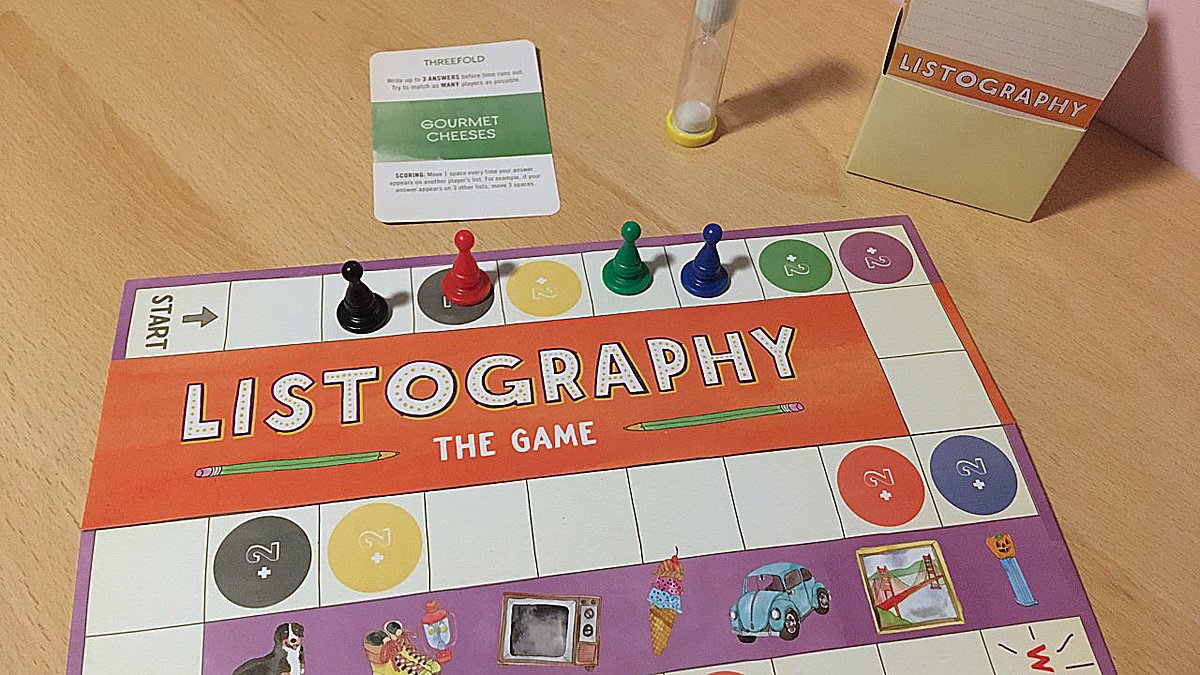
The different card types also help keep Listography from becoming stale. Forgotten Four cards where you’re trying to avoid matching your answers with those of other players require you to think about the subject in a very different way from Threefold ones where you want to match as frequently as possible. You’ll almost certainly find yourself overthinking the Forgotten Four cards too. “This is a really obscure answer, but what if someone else knows it too and they also write it down because it’s obscure? Should I put down a really obvious answer instead because the others will think it so obvious they wouldn’t think to include it? Or will they use that tactic too?!”
One change I would like to see in future editions is to make the cards more flexible by having the three question types determined by a spinner or die-roll, while the cards only have the subject written on them. This would then allow each subject to be played in three different ways. We also found that the length of the game track on the board itself was too short, especially with the possibility of players getting bonus moves forward and I’d love to see better quality Player Tokens as these were the one element that let the game down in terms of quality,
For those looking for something loud, silly, and raucous to play over the holidays – this is not the game for you. But for those hunting down a fun game for quieter moments when everyone just wants to sit and digest their turkey, Listography is a perfect choice that will soon have everyone talking and discussing things like whether or not ‘Scarif’ is a valid answer for “Famous Beaches”.
GeekMom received a copy of this game for review purposes.

